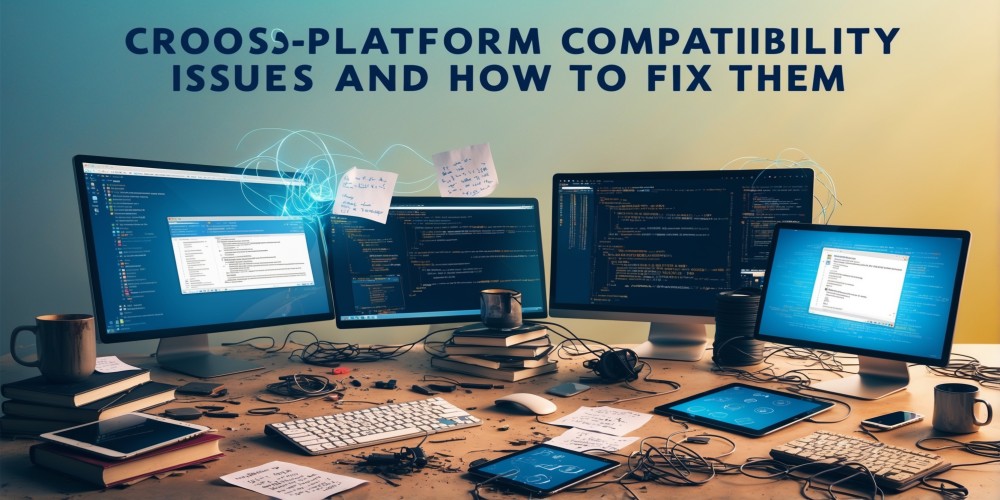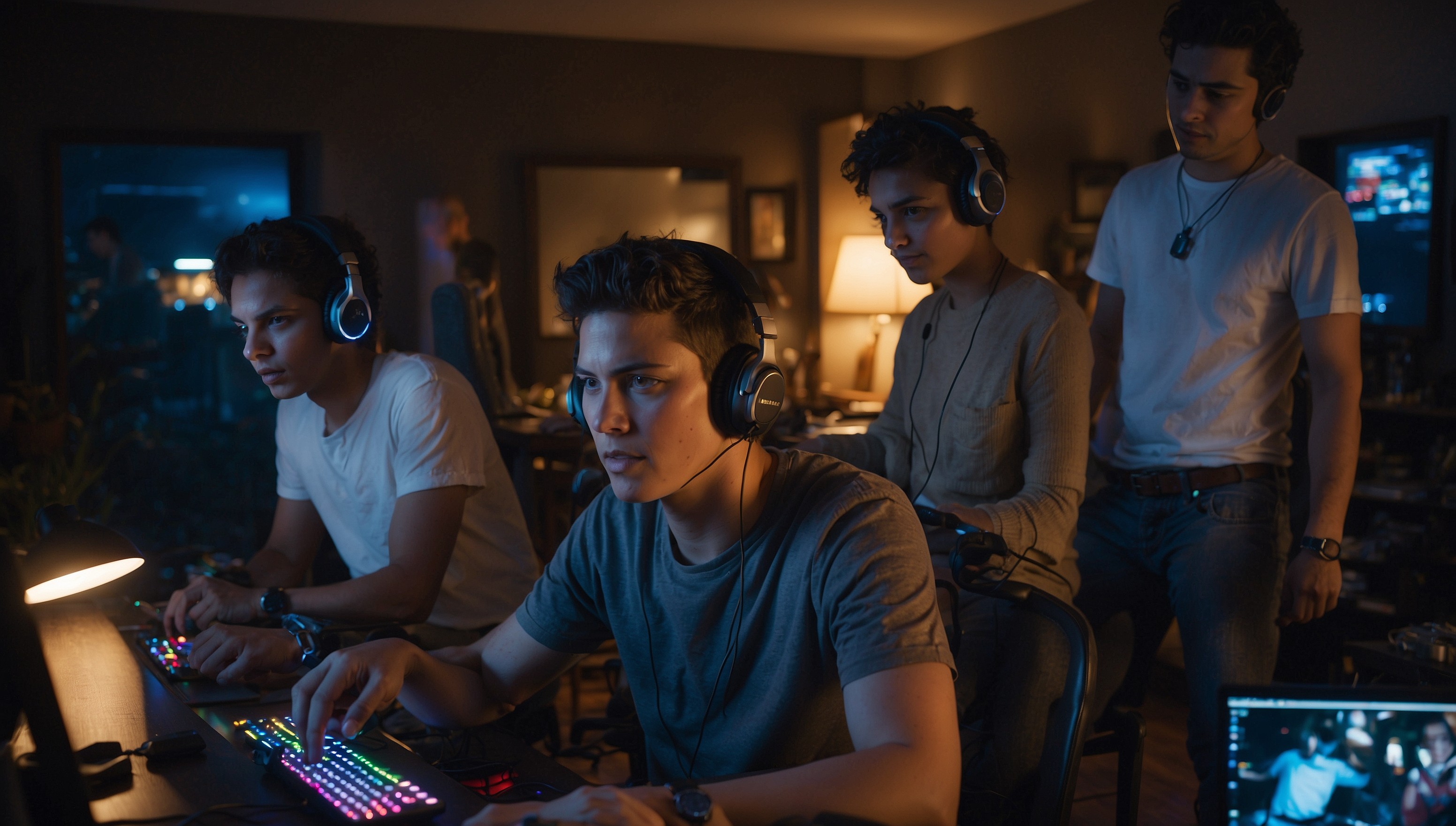Cross-Platform Compatibility Issues and How to Fix Them
Sep-27-2024

Imagine this: you’ve been hyped about a new game release, you download it, launch it on your device, and... bam! It’s glitchy, lagging, or even unplayable. Why? Cross-platform compatibility issues. As much as we love the idea of playing with friends regardless of their platform, these issues can make the experience feel like a bad speed run. Let’s dive into the world of cross-platform gaming and how to tackle those annoying hiccups that can ruin the fun.
What Are Cross-Platform Compatibility Issues?
Cross-platform gaming means playing with or against other gamers on different hardware or consoles—like PC, Xbox, PlayStation, or even mobile devices. Sounds awesome, right? And it is... until compatibility issues crash the party. These hiccups can be as small as mismatched game settings or as huge as servers failing to sync up. It’s like trying to organize a raid with players who speak different languages; it’s a mess unless everyone’s on the same page.
The Main Culprits of Compatibility Issues
When it comes to cross-platform gaming, a few troublemakers are behind most of the problems. Here’s what’s often messing with your game:
- Different Hardware Capabilities: Not all platforms are created equal. Your gaming PC might be a beast, but that doesn’t mean your friend's console can handle the same graphics or frame rates. It’s like racing a sports car against a bicycle—one’s bound to lag behind.
- Software and Operating System Differences: PC gamers running different versions of Windows or macOS might run into bugs that console players never see. Mobile gamers face an even bigger challenge, as app versions and operating systems can vary widely.
- Network Synchronization: Ever noticed that one friend always seems to be lagging behind or jumping across the screen? That's likely due to synchronization issues between platforms. A bad network connection can make it feel like you’re playing in the dark ages, no matter how good the game is.
- Inconsistent Game Versions: Keeping everyone on the same game version is key to smooth cross-play. If one platform gets an update before another, you’re going to have problems. It’s like trying to party up with someone who hasn’t installed the latest expansion.
How to Fix Common Cross-Platform Issues
<img data-cke-saved-src="https://cdn.leonardo.ai/users/802d766d-ad65-4573-b9ed-469f22669451/generations/3b925028-09eb-43a2-b262-4cb971bcf184/Leonardo_Kino_XL_A_vibrant_futuristic_illustration_of_crosspla_0.jpg" src="https://cdn.leonardo.ai/users/802d766d-ad65-4573-b9ed-469f22669451/generations/3b925028-09eb-43a2-b262-4cb971bcf184/Leonardo_Kino_XL_A_vibrant_futuristic_illustration_of_crosspla_0.jpg" alt="A vibrant, futuristic illustration of cross-platform gaming, featuring a diverse group of friends, each holding a different gaming device, such as a console, PC, smartphone, and virtual reality headset, gathered around a large, circular screen displaying a shared, dynamic game world, with a cityscape at dusk as the backdrop, characterized by neon lights, sleek skyscrapers, and holographic advertisements, all set against a gradient of deep blues and purples, evoking a sense of excitement, connection, and limitless possibilities, with the friends" facial="" features="" ranging="" from="" focused="" to="" joyful,="" and="" their="" skin="" tones="" varying="" porcelain="" rich="" brown,="" with="" unique="" accessories="" clothing="" that="" reflect="" individuality,="" such="" as="" colorful="" hair="" clips,="" statement="" jewelry,="" personalized="" gaming="" skins.'="" width="100%" height="100%">
Okay, enough with the horror stories. Let’s talk solutions! Here’s how you can troubleshoot and fix those pesky issues that keep popping up when you’re trying to game with friends across platforms.
1. Keep Your Game Updated
Tip: Make sure you’re always running the latest game version. Developers often release patches to address compatibility issues, so staying updated can be the difference between smooth gameplay and getting kicked out of every match.
How do you do this? Check for updates manually if your game doesn’t do it automatically. This applies to both your gaming console or PC and your game software. Remember, an out-of-date game is like an old map in a new dungeon—useless.
2. Match Graphics Settings to Your Device
One common compatibility issue stems from mismatched graphics settings. If you’re playing on a high-end gaming PC, you might be running at ultra settings while your console buddies are stuck on medium or low. This disparity can create sync issues and lag.
To fix this, adjust your graphics settings to match the performance of the lowest-end device in your party. It might not give you the most stunning visuals, but it’s a surefire way to get everyone playing on a level field. Think of it as finding a pace that suits the whole group—it’s about keeping everyone together, not about who can sprint the fastest.
3. Choose the Right Network Settings
Ever experienced that painful rubber-banding effect where your character keeps getting pulled back like a slingshot? That’s usually a network issue. For cross-platform play, make sure your internet connection is as stable as possible. Use a wired connection instead of Wi-Fi if you can; it’s like switching from a wooden sword to a legendary blade—way more reliable.
Also, check your game’s server settings. Some games allow you to select servers based on location, so pick one that’s closest to you and your friends. It’s like finding a central meeting spot—it’s easier to get there, and everyone arrives on time.
4. Sync Game Settings with Friends
Syncing game settings like frame rate limits, refresh rates, and resolution can go a long way in smoothing out gameplay. Think of it like a dance routine; if everyone’s following different steps, it’s going to be chaos. But if you’re all in sync, you’ll be gliding through matches.
Coordinate with your friends to adjust these settings similarly. It might feel like you’re making small sacrifices—dropping your 120 FPS down to 60, for example—but it’s worth it for a seamless experience. It’s a bit like taking one for the team so you can all enjoy the game.
5. Use Cross-Platform Chat Solutions
Communication is key in any multiplayer game, and having a reliable chat solution is crucial for cross-play. Some games have built-in voice chat, but it’s not always the best. If your in-game chat isn’t cutting it, use external platforms like Discord. It’s like having a secret weapon that makes coordination easier than ever.
Make sure everyone is using the same voice channel, and set it up before you jump into a match. It’ll save you from those awkward moments when one player is shouting strategies while another is in total radio silence.
6. Look for Community-Driven Fixes
If you’re still stuck, the gaming community might have already found a workaround. Check out forums, subreddits, or Discord groups related to your game. It’s like consulting a wizard in a fantasy game—they’ve got the inside scoop that can significantly conserve your time while reducing your exasperation.
Many gamers share their troubleshooting experiences, and you might find a simple tweak or a hidden setting that solves the issue. Don’t underestimate the power of the community; it’s like having a team of healers when you’re low on health.
Why Cross-Platform Play Is Worth the Struggle

Despite the challenges, cross-platform gaming is a revolution worth fighting for. It’s not just about the convenience of playing with friends across different devices; it’s about breaking down barriers and making gaming accessible to everyone. Think of it as leveling up the whole gaming experience. When it works, it feels like hitting a critical hit every time you play—satisfying, rewarding, and oh-so-sweet.
Sure, the road to a smooth cross-play experience might be rocky, but that just makes the victories feel even better. The feeling of overcoming these challenges is like finally taking down a raid boss after countless failed attempts. It’s tough, but it’s totally worth it.
Looking Ahead: The Future of Cross-Platform Compatibility
Developers are increasingly aware of these issues and are working to make cross-platform play as seamless as possible. As game engines evolve and networks become more sophisticated, we’ll likely see fewer compatibility hiccups. The future of gaming looks bright, with more universal standards that allow different platforms to speak the same language—kind of like finding a common tongue in a multiplayer fantasy world.
Until that day comes, though, these insights and clever hacks will assist you in journeying through the challenging terrain waters of cross-platform gaming. So grab your controller, invite your friends from across the gaming universe, and get ready to play without those pesky compatibility glitches slowing you down.
After all, nothing beats the thrill of beating your rivals, no matter what device they’re using. And with these fixes in your toolkit, you’ll be ready to face whatever cross-platform challenges come your way. Game on!







